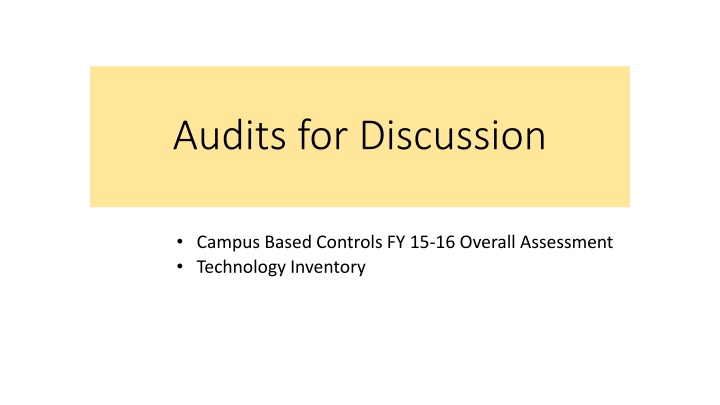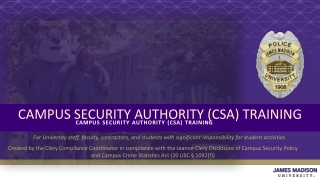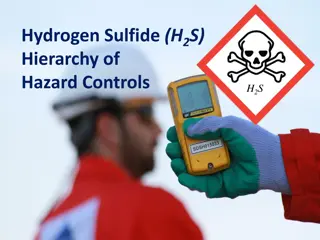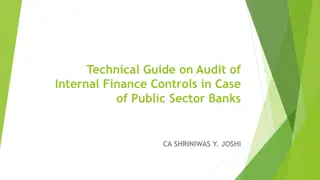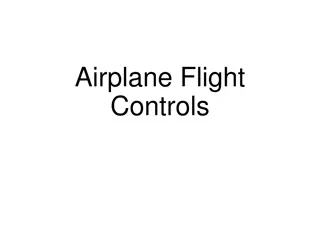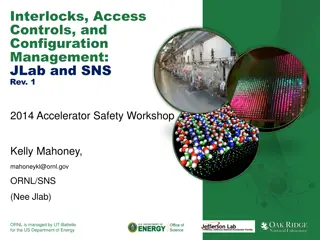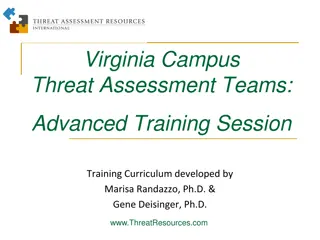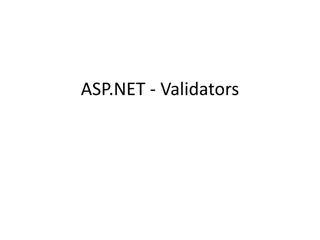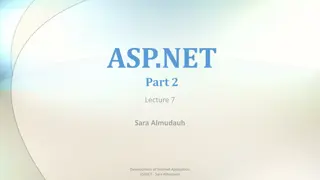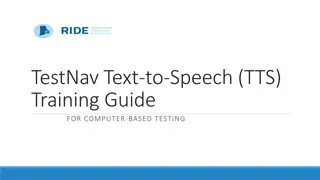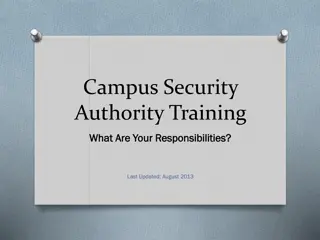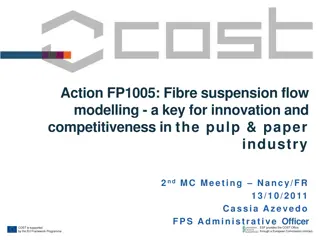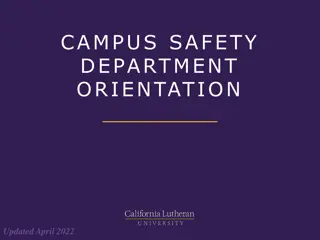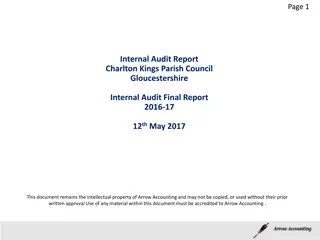Overall Assessment of Campus-Based Controls FY 15-16
Reviews of campus operations revealed deficiencies that should be addressed at the administrative level. Audits identified a lack of identified responsible parties, office manager responsibilities, undeveloped monitoring and reconciliation procedures, and issues related to campus management turnover.
Uploaded on Apr 29, 2025 | 0 Views
Download Presentation

Please find below an Image/Link to download the presentation.
The content on the website is provided AS IS for your information and personal use only. It may not be sold, licensed, or shared on other websites without obtaining consent from the author.If you encounter any issues during the download, it is possible that the publisher has removed the file from their server.
You are allowed to download the files provided on this website for personal or commercial use, subject to the condition that they are used lawfully. All files are the property of their respective owners.
The content on the website is provided AS IS for your information and personal use only. It may not be sold, licensed, or shared on other websites without obtaining consent from the author.
E N D
Presentation Transcript
Audits for Discussion Campus Based Controls FY 15-16 Overall Assessment Technology Inventory
Overall Assessment Campus Based Controls Audits Overall Assessment Campus Based Controls Audits Campus Based Controls Audits: Reviews of campus operations to identify similar deficiencies amongst various campuses that should be addressed at the administrative level. 3 audits completed for fiscal year 2015-2016 Nancy Cochran Elementary Henry W. Longfellow Career Exploration Academy North Dallas High School
Overall Assessment Campus Based Controls Audits Overall Assessment Campus Based Controls Audits Overall Assessment Campus Based Controls Audits A Lack of Identified Responsible Parties: The current District leadership structure places each business area s Chief at the same level of authority. This structure appears to cause disconnect between departments when key activities cross business areas and places no one department with the responsibility of developing consistent procedures or providing oversight to ensure complaint processes. No designated responsible party was found to lead to: Confusion with external requirements Lack of established oversight procedures to monitor for compliance Lack of provided training at the end user level Lack of documented procedures and inconsistency with processing Office Manager Responsibilities : 118 Office Managers responded to an information request and provided a more comprehensive view on the tasks they are requested to perform. The compiled lists identified 138 separate tasks Office Managers were responsible. Assessment form the review of these duties showed: Listed duties appear to expand beyond normal support staff duties Duties appear to possibly require an education level above the current requirement for the Office Manager position Office Managers are relied upon to meet District compliance requirements which is difficult with the high number of duties The Office Manager position does not have the authority to ensure some duties are completed
Overall Assessment Campus Based Controls Audits Overall Assessment Campus Based Controls Audits Undeveloped Monitoring and Reconciliation Procedures at both Administrative and Campus Levels: A number of noncompliance issues with both internal and external regulations that occurred because of a lack of established monitoring and reconciliation procedures. All three schools audited had instances of noncompliance that could have been mitigated with the proper implementation of reconciliation procedures Campus Management Turnover: The District has not established or emphasized the importance of documenting daily procedures at the campus level. Without documented procedures to help guide new management, continuity of operations cannot be ensured. This issue, in combination with the other overall issues noted, has led to both a lack of understanding on required activities and a continuance of improper operations that were inherited from previous management.
Continuous Monitoring Project Continuous Monitoring Project Overall Assessment Campus Based Controls Audits Overall Assessment Campus Based Controls Audits Conclusion: The District has not adopted a set standard of internal controls on which to base its operations. Consideration should be given to these documents as they relate to the District s operations. Additionally, the District should provide a greater emphasis on the establishment and benefit of internal controls at all levels to help mitigate risks to the achievement of goals.
Technology Inventory The District s technology inventory management tool is not being utilized to its full potential: Internal audit tested a total of 149 technology devices at both the campus (96 devices) and department (53 devices) levels Of the 96 devices selected for testing at campuses 50 were in the correct location as stated in Hayes TIPWEB-IT (52%) Of the 53 devices selected for testing at District departments 11 were found in the correct location as stated in Hayes TIPWEB-IT (21%) Internal Audit found that a lack of established and implemented procedures on how departments and campuses were to manage inventory contributed largely to limited effectiveness of Hayes TIPWEB-IT Lack of properly established monitoring controls for the donation of technology inventory : Testing of donated technology items identified that donations were not properly reported or approved, and restricted donation websites were being used by district employees to request donations of money and other technology items
Technology Inventory The District s asset transfer/disposal process is not executed effectively: A number of campuses and departments that were selected for inventory testing had large dedicated areas for obsolete technology devices. When inquiries were made into these devices it was found that they had been there for extended periods of time and the individuals responsible were not utilizing the District s Equipment Removal Request (ERR) process Lack of established policies and procedures for District issued cell phones: There are no policies or procedures developed for the management of District supplied cell phones and hotspot devices. The District does not tag cell phones for tracking purposes The District does not retrieve cell phones that are replaced for obsolescence
Technology Inventory There are a number of ways that Campuses and Departments can acquire technology inventory: The District has not established a common process for the acquisition of technology inventory. The technology acquisition methods identified are : The IT Department s annual forecast Campus or Department direct purchase Donations District cell phone acquisition method
